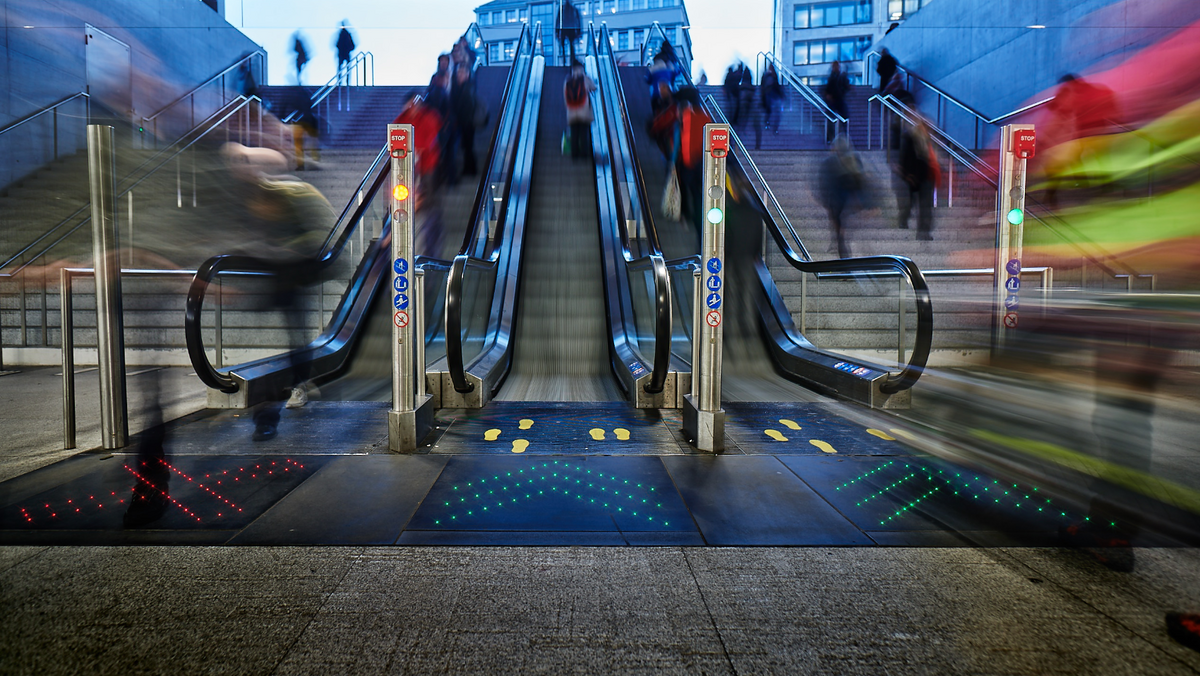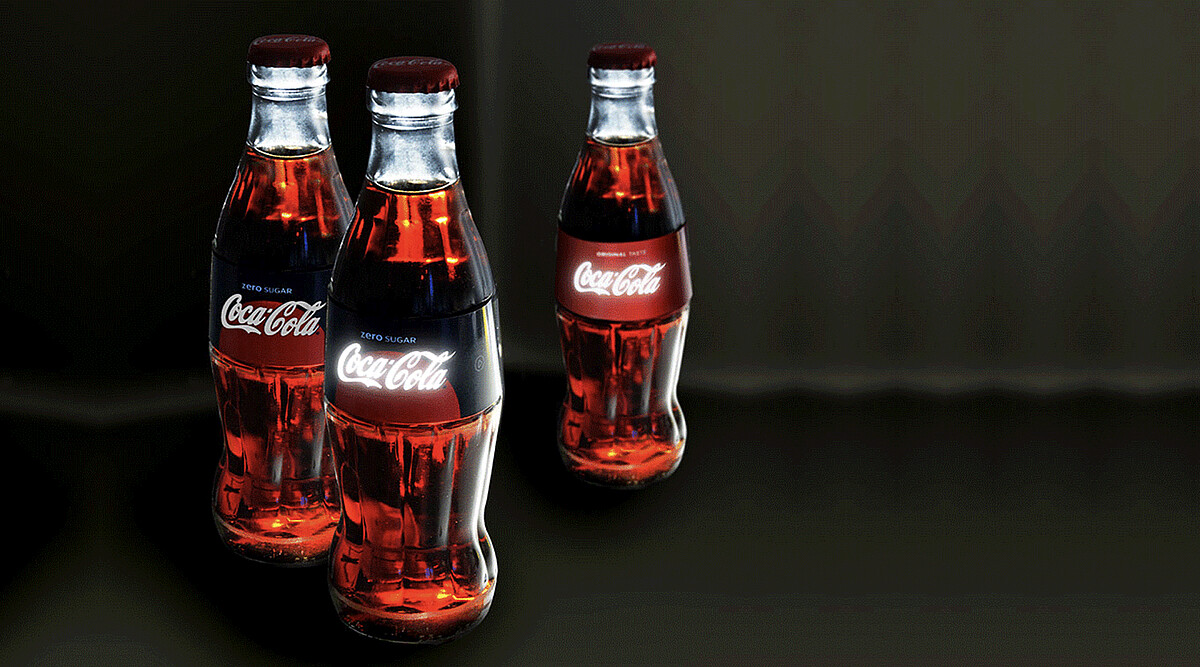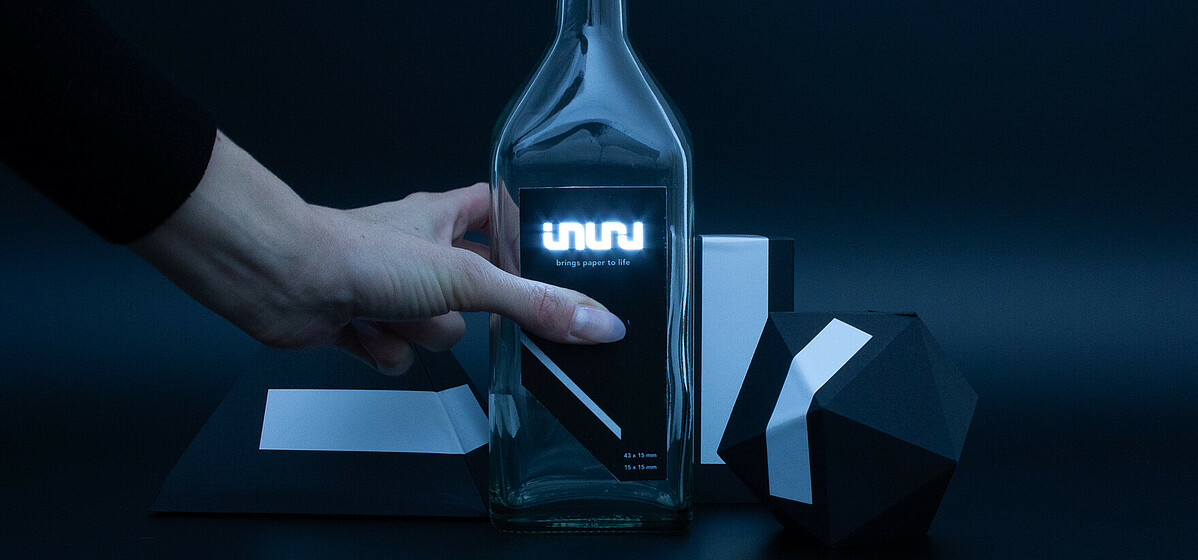Paving The Way
One evening 5 years ago, Benjamin Westerheide and Vincent Genz stood on a stage in front of hundreds of people holding up a brick. Today, they run a successful company with an innovative product.
The BPW is Berlin-Brandenburgs biggest annual business plan competition, culminating in three big events per year. BPW participants get free classes, coaching and mentoring on all aspects of entrepreneurship. Winners get praise, publicity, prize money and often an investment deal or business partnership. In 2015, the judges recognised the potential of that brick.
Benjamin and Vincent won that evening. Not only architects were impressed by the possibilities of this prototype cinder block the two young men presented.
So what was so special about it?
It glowed.
Smart Concrete
Siut integrates optical fibres and electronics into precast concrete blocks. The result is that the surface has luminous elements. This means that such a building block may be placed in a specific location in a wall or floor where it functions as illuminated signage. Arrows, pictograms, lines or crosses need no longer be painted onto surfaces after construction, but can be integrated into the architecture.

These hi-tech slabs are proving popular and efficient especially in greatly frequented buildings and public spaces such as railway stations and airports. They are being implemented in various cities in Germany and Switzerland as integral parts of guidance and orientation concepts, elevator and escalator displays or warnings, or luminous design elements.
Architects are catching on to the possibilities that Siut’s new material is opening up. For use indoors and out, with a wide range of material finishes (from blasted charcoal to pure white smooth), and even the option to include built in sensors or receivers for transmitted data, the material sets hardly any limitations to an architect’s imagination. Naturally, the slabs come with fixture systems for easy attachment to structural frameworks, making them easy to apply in the actual construction process.
Pulsating patterns or signs, sensors to determine the strength of light emission (in full sunlight the slabs need to glow harder), textured surfaces to alert hurried feet even without any visual signal - this patented new technology has significant safety aspects and potential in a variety of fields. Having proved itself in infrastructure projects, the company is now experimenting with traffic control and in other mobility contexts.
We asked Siut founder Vincent Genz a couple of questions.
When you pitched at BPW, how did you foresee your future five years down the line? Did things turn out as you imagined? What’s different?
Nobody can predict the future, and it is very rare that what you believe will happen actually does. But that was exactly what happened to us. We started out in the design area with our material Light Fiber Optic Concrete and now work almost exclusively in the field of infrastructure. The idea and the team must be very good at the beginning, then you have a chance. Success or failure is ultimately determined by how well you can react to the market and demand. As long as you act flexibly as a startup, there is a chance to be successful.
You have your HQ in Berlin Prenzlauer Berg, a central and trendy area. Why aren’t you in some more industrial district, such as Adlershof?
We mainly use our location to meet customers. A central office in Berlin is essential for this – at the same time we are still connected to the Technical University Berlin [also very centrally located] as a research and development company. This helps immensely with the adaptation and further development of our products.
How far away is the furthest Siut slab?
There is demand from nearly all parts of the world. However, our current focus is still on the European continent. We have already implemented various projects here. We are talking about concrete, after all. Distribution requires sophisticated logistics!
A Glowing Future
Of course, not only buildings have surfaces. Berlin startup Inuru has a vision of bringing static printable surfaces and articles of daily use to life. By adding a layer of technology containing a modern version of the good ol’ light emitting diode to packaging or printed matter, Inuru hopes to revolutionise the way we see and interact with ordinary things. Smart surface technology, they call it.
Inuru’s product creates light effects on labels or in magazines. Unlike special inks that might have a particularly high reflective power and thus appear to glow a little, Inuru’s surface layer actively emits light because it contains diodes and a “printed” battery.
Coca Cola drinkers in Singapore were astonished when their bottles suddenly lit up as they touched them. The electronics in the paper label produced the surprise effect. Advertisers are keen to cause a similar impact in readerships of high-end magazines. But the short term wow of “touch and it lights up” is just the beginning.
Inuru is able to integrate sensors into its paper. So a package might light up due to heat, cold or humidity – for instance bottles of beer might glow when you put them into an ice bucket. More spectacular still, the sensors can pick up proximity. Imagine walking down the aisle of a supermarket and the labeling on the products on the shelves moves as if it were film – but only as you walk by. Brief moving images can be created by changing the patterns of lights.

Paper Thin Organic LED as Sustainable Hi-Tech
Inuru is very aware of the potential harm to the environment if all sorts of packaging, already a waste problem in itself, suddenly contains electronic scrap too. That’s why they have committed themselves to using only natural materials for all elements of their products. While more expensive in the short run, the commitment has no adverse effects for the product. On the contrary. Take battery life, the eco-friendly printed battery lasts a minimum of 500 activations.
“Some companies buy basic SMD components from Asia and integrate them into paper to achieve a light effect. None of these cares for sustainability and none of these can scale at a low price tag. And none of these is able to create displays on paper that are as good and cheap as our technology allows,” says Marcin Ratajczak proudly, founder and director of Inuru.
Asked when he thinks Inuru’s special paper will be on products lining the shelves of the local supermarket, he says, “Our product is already available to a limited clientele and is also in some supermarkets. We are now working on increasing our production capacities to bring it to a wider market and thus more products that you can find in the local shop around the corner. This might be the case in 2-3 years from now.”
So look out, not long now and grocery shopping is going to be a lot more entertaining!
Photonics Cluster Berlin-Brandenburg
Siut and Inuru are just two examples of innovative companies in the photonics cluster Berlin-Brandenburg. Photonics is one of the five focal points of Berlin's economic and technology policy and the city encourages innovative companies to invest here and offers comprehensive support. As a result, Berlin is one of the world's leading locations for research and industry in this field.
Text: Olaf Bryan Wielk, ideenmanufaktur
Header image: © Inuru

